
The toughest challenge for an entrepreneur is the empty page. While rarely discussed, the empty page is responsible for more businesses failing than any other obstacle. The empty page has boundless possibilities, no limits….and no guidelines. The absence of form scares potential entrepreneurs off before they start because of the lack of feedback to inform whether they are making the right decisions.

Successful entrepreneurs see the empty page differently. While the entrepreneur will transform that page into a series of ideas into a plan into a product, they look past the page to a process that will allow for that evolution to occur. The successful don’t sense what customers want, they learn it through a scientific process of hypothesis and experimentation. They discover their best business by building a series of Minimum Viable Products or MVPs.
Minimum Viable Answer: Where We Define a Minimum Viable Product
The original minimum viable product definition is “a version of a new product which allows a team to collect the maximum amount of validated learning about customers with the least effort.” This is a good starting place, but not nearly detailed enough for someone who wants to know what a minimum viable product is in concrete terms.
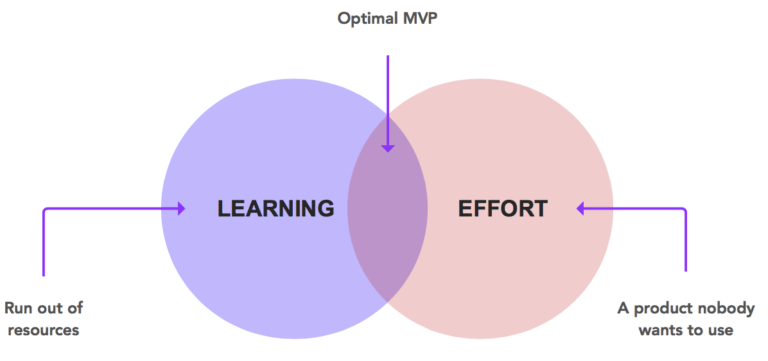
The key to a good MVP is learning – specifically learning what works for your customer. You have an idea for a product and you think people will buy it, but you can’t know. An MVP is a way to get real feedback from your potential customers to inform whether you should adjust your product or even to continue the business at all.
A secondary but vital consideration is “least effort.” As an entrepreneur, your resources are going to be limited. It is devastating to build a product that consumes a lot of those resources and to have customers not respond to it. An MVP is about building a simple, scaled down version of what you want to eventually develop. By building a scaled down version you are protecting yourself; if the response to your MVP is low you will still have most of your resources to investigate a new direction.
It is important to remember that the most important element is testing your assumptions. If you build a low-cost prototype and that does not provide actionable feedback, it is still too expensive because it didn’t help you achieve your goals. You can find more on the meaning of a minimum viable product here.
Staying Lean and Agile
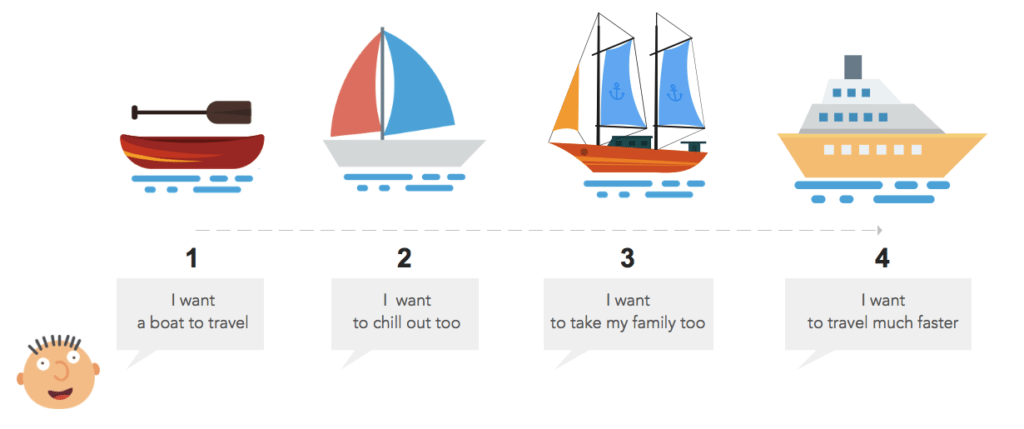
Constructing an MVP is not a one-time event; it is an iterative process. You build an MVP to test one assumption in your business model, get feedback, make the appropriate adjustments, and then build a new MVP to test the next assumption. Getting the most from this process requires fast execution. To ensure speed and quality results, most entrepreneurs develop their minimum viable product process using Lean Startup and Agile principles.
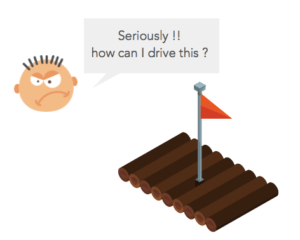
The Lean Startup Process, developed by Eric Ries, applies the scientific process to developing your business. A Lean Startup identifies the key assumptions of its business model, such as whether customers are interested in the idea or whether the product is easy to use, and verifying that those beliefs are true.
Agile Development is a practice of incremental development of products. Instead of building a full product with all the features you could possibly want, an Agile developer iterates new products by adding a feature at a time. This allows coders to quickly identify problems and to assess customer response to a given feature.
The Lean Startup concepts allow you to identify the assumptions your MVP needs to test while Agile Development provides the process by which you construct your series of MVPs. You can find more on how lean startup and agile can work together to help you develop your own minimum viable product template here.
Your Minimum Viable Product Roadmap
There is no such thing as a standard practice for MVP development, but there are guidelines that can help you build the right type of MVP at the right time.
There are two different classes of MVP; low-fidelity and high-fidelity. A low-fidelity MVP is meant to test whether there is a large enough group of customers that would be willing to buy your product or service if offered.
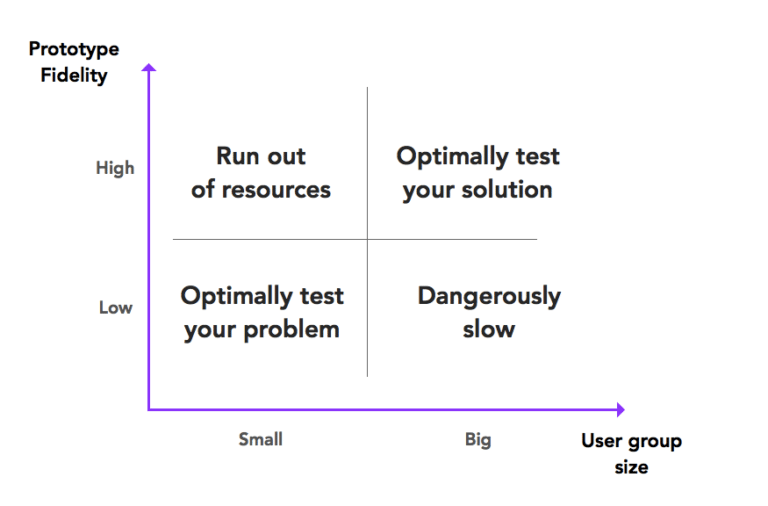
In other words, do a group of customers have a certain type of problem that they would be willing to pay you to solve. A high-fidelity MVP addresses whether your product solves that problem. You build a low-fidelity MVP first to ensure that the problem is worth solving, then you build the high-fidelity MVP to ensure that you are solving the problem.
To learn more about low-fidelity MVPs, consider reading this post. For more on high-fidelity MVPs, consider reading this post.
The low- and high-fidelity MVPs are meant to test product-market fit and usability respectively. Product-market fit is whether what you are developing could appeal to a specific need of a subset of people. Usability speaks to whether people can easily use the product. As a result, you could have a product that is easy to use but doesn’t appeal to the people to which it is marketed. Your product needs both of these qualities to succeed. You can find more on product-market fit and usability here.
There are several different types of low-fidelity MVPs. The two characteristics of a low-fidelity MVP is that it is exceedingly cheap to build and that it effectively measures your perspective customers interest in solving the problem you are trying to address. The low-fidelity MVP can be anything from finding a successful comparable firm solving the problem you want to solve in a different way to you manually providing the service you wish to automate for customers. So long as your MVP is cheap to construct and provides solid feedback, it works. You can read more on low-fidelity models here.
Once you have verified the problem is worth solving, the next step is to build your high-fidelity MVP. Your early iterations might have some initial bugs and serious usability issues, so it is best to start testing with a small audience. Studies show that 85% of problems can be identified with user bases as low as five people. Once you have gained confidence that most of your usability problems have been identified, expand your testing base. Focus on how people are navigating the site and whether they are accessing all the features available, not on what features to add. Get more information on managing the high-fidelity development here.
Main traps and obstacles to truly adopt the MVP principles
Now that you have the basic roadmap for developing your own MVP, you need to know what traps are out there. Here is a quick minimum viable product checklist of things to avoid while iterating through your development process.

1. Your Target Audience is Too Expansive:
Most people believe that their product will ultimately be valuable to everyone regardless of background and need. Some products do eventually become that. However, to begin with, your product should try to solve a very particular need for a subset of people. So instead of trying to please everyone, try to help millennials who have budgetary concerns or baby boomers who don’t understand technology or whatever group makes the most amount of sense for your product. Once you have identified a product that satisfies the need of your target group, you can expand your focus to other market segments.
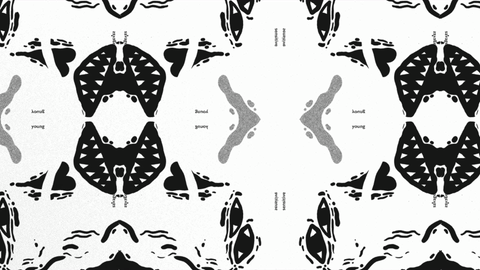
2. You Lose Sight of What You Are Trying to Solve:
As the development process unfolds, you will often come up with new ideas for new products or to help other groups outside of your target audience. You will be tempted to fold those ideas into your current product to make it more popular. Avoid that. Adding too many features will confuse your audience about what the product’s purpose is, which will lead to a decrease in sales.

3. Moving too Slowly:
The key to a successful MVP is fast The whole point of an MVP is that you get to test as many ideas as possible while your larger competitors move too slowly to make necessary changes. That only works if you can develop your MVPs fast enough to constantly test assumptions.
While these are some of the most common mistakes an entrepreneur can make with an MVP, it is not an exhaustive list. For more, consider reading this post: 5 mistakes most entrepreneurs make when building an MVP.
Build Your Minimum Viable Product Like a Most Valuable Player – Best Practices
When building your MVP there are a couple of factors that you should consider.

The first is money, or more specifically, when you should begin asking your customers to pay. You should begin charging for your product as soon as you begin providing a service to your customer to any extent. While the purpose of the MVP is to learn more about your customers, you’re looking to make money from your product. In addition to helping pay your bills, having your customers pay for using an MVP provides powerful feedback. It is one thing for a customer to say they’d buy something, it is something else for them to actually do it. So long as you are providing customers a service, they should pay.

You should also test your riskiest assumptions first. An assumption is risky if it has the potential to have a big impact on your business if it should not be true. The larger the impact, the greater the possibility for business failure, and the riskier the assumption. Your risky assumptions should be the first things your MVPs test.
Finally, don’t lose sight of your customer. Understand that while you are trying to minimize your risk in developing your MVP, your customers are trying to mitigate their risk too. Introducing something new that doesn’t work for their use case can have a negative effect on the value your customer derive from using your product. Never let the “minimum” in MVP mean minimum value to the customer; keep the number of features low but the quality high. Mitigate the risk for both yourself and your customer.
MVPs in the Wild – Successful Minimum Viable Product Examples
MVP is not just good in theory; it excels in practice. Here are a few examples of incredibly successful companies that used MVPs to validate their ideas and get their start.

Dropbox:
When the founders of Dropbox formed their business, they just had an idea. The cost of building a prototype was too high. To test their value proposition, Dropbox developed a low-fidelity MVP in the form of a video. Using simple animation, this 3-minute video conveyed the basic functionality of the product and why someone would want to pay to use it. Because of that video, 75,000 users signed up to use Dropbox before the product was developed. This gave the founders the confidence they needed to proceed with their development.

Airbnb
Would strangers really pay to stay in someone’s house instead of a hotel? That is what the founders of Airbnb wondered.
To test the principle, the founders took pictures of their apartment and advertised online that it was available for rent during a popular conference in their town.
The founders were able to “book” their apartment for the entire duration of the conference to three separate, unrelated customers, validating their initial assumption. Further, the founders were able to interact with their guests during their stay.
The Airbnb founders used this experience to understand what potential customers might want and were able to generate a list of features to develop in the future.
Using this information, the founders then began to develop their now famous platform. Read our full Airbnb case study.

Before Twitter was a micro-messaging board it was a podcasting platform called Odeo. Odeo was losing market-share due to the introduction of iTunes, so the company needed to pivot fast. After a frantic hackathon, Odeo developed twttr. They initially tested the service within their own organization, and soon their employees were incurring massive phone bills due to their activity on the platform. Using that as validation of the service’s popularity, Twitter was released to the general public.
While this post is a good starting point for understanding why minimum viable products are important and how to develop them, more study into the process is highly recommended. Consider following the links above to learn more about the steps in this crucial process. If you need additional help, consider contacting CobbleWeb. We provide minimum viable product services and can help you turn that blank piece of paper into a thriving business. We can help you make something out of nothing.
